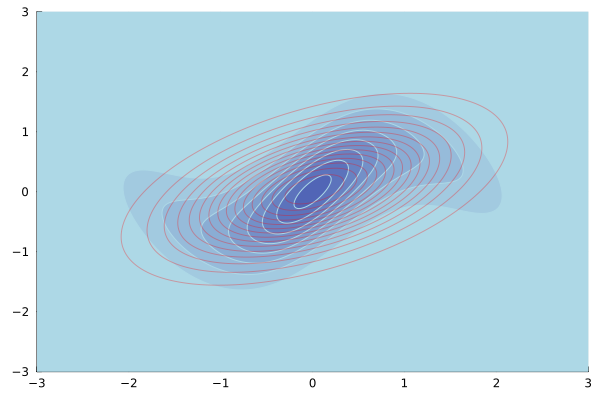ApproximateVI.jl
What's this package for?
Use this package to approximate a posterior distribution with a Gaussian[1].
Basic use
Currently, the main function of interest this package exposes is VI. At the very minimum, the user needs to provide a function that codes the (unnormalised) log-posterior function.
Let's consider the following toy example:
using ApproximateVI
logp = exampleproblem1() # target log-posterior to approximate
x₀ = randn(2) # random initial mean for approximating Gaussian
q, logev = VI(logp, randn(2), S = 100, iterations = 10_000, show_every = 50)
# Plot target posterior, not log-posterior!
using Plots # must be indepedently installed.
x = -3:0.02:3
contour(x, x, map(x -> exp(logp(collect(x))), Iterators.product(x, x))', fill=true, c=:blues)
# Plot Gaussian approximation on top using red colour
contour!(x, x, map(x -> pdf(q,(collect(x))), Iterators.product(x, x))', color="red", alpha=0.2)A plot similar to the one below should appear. 
Options S above specifies the number of samples to use in order to approximate the variational lower bound, i.e. the objective that which minimised produces the best Gaussian approximation. The higher S is set the better, however, at a higher computational cost. The lower S the faster the method, but the riskier to produce a biased solution, see Technical description.